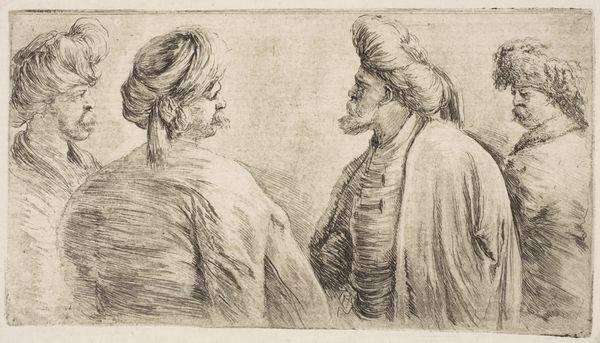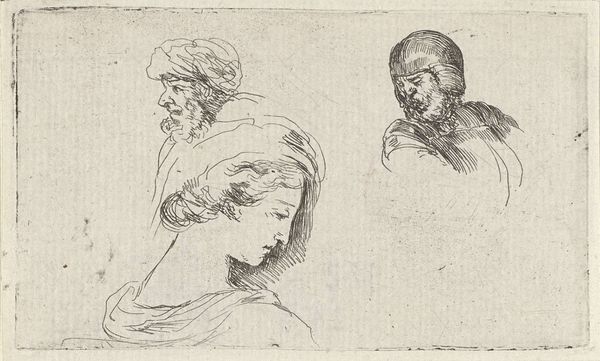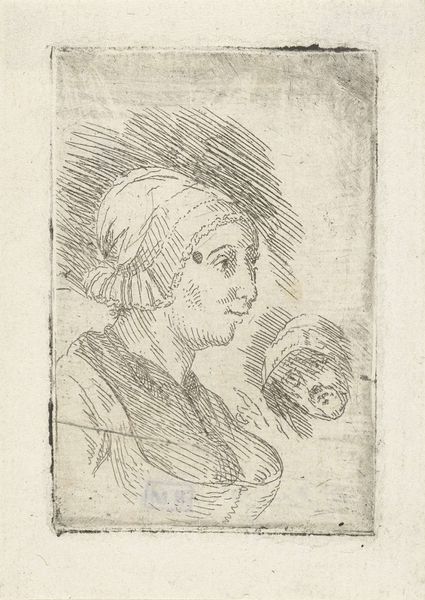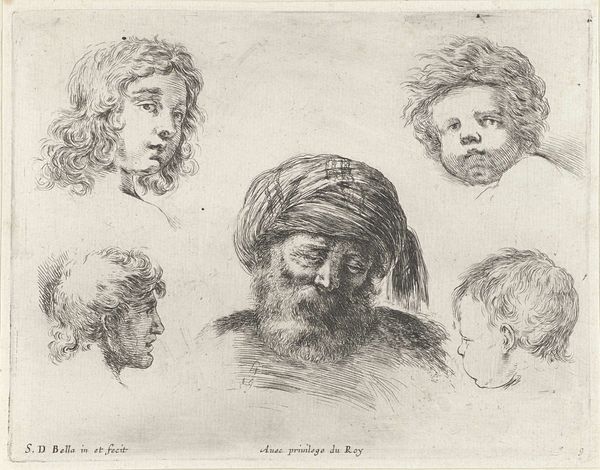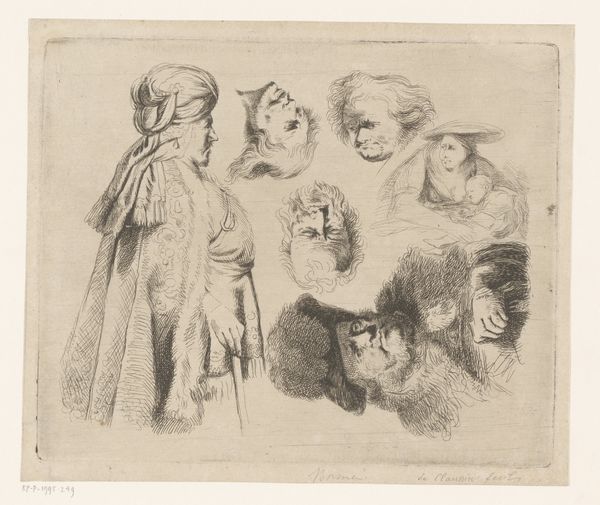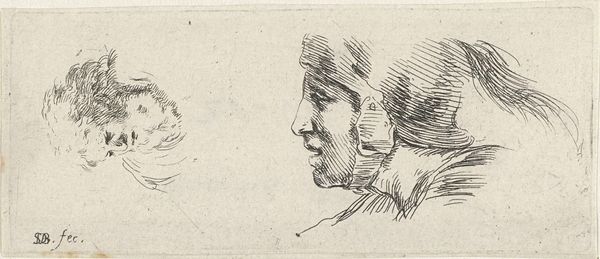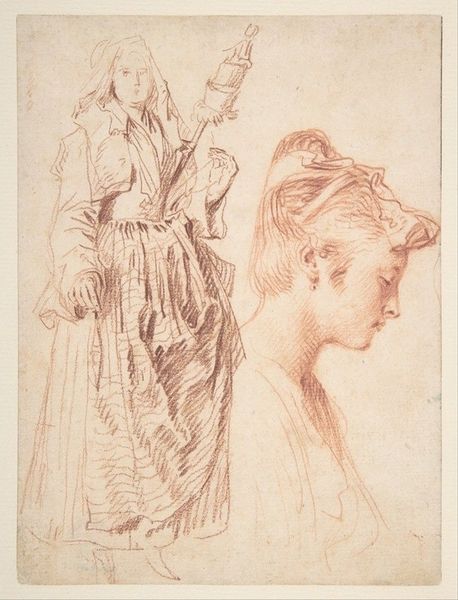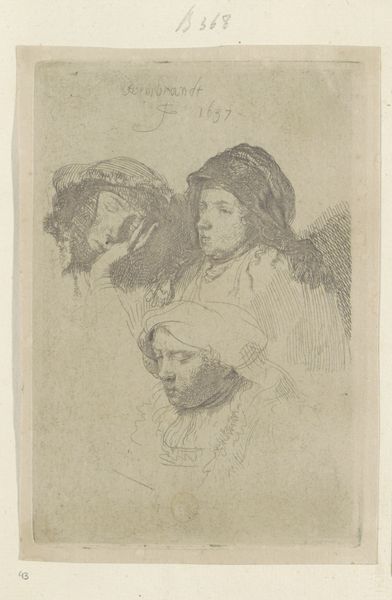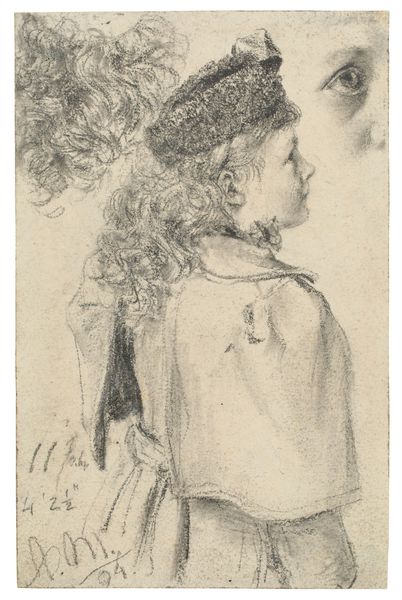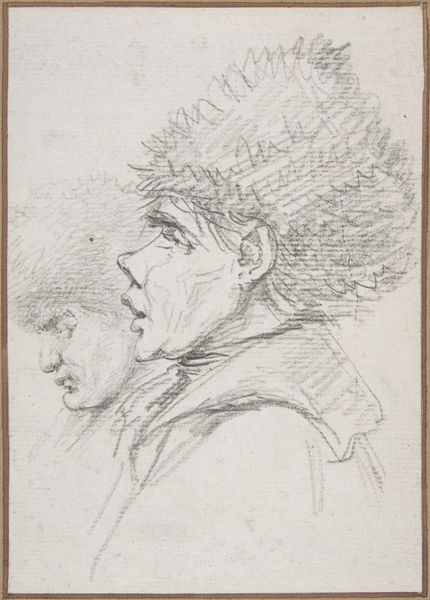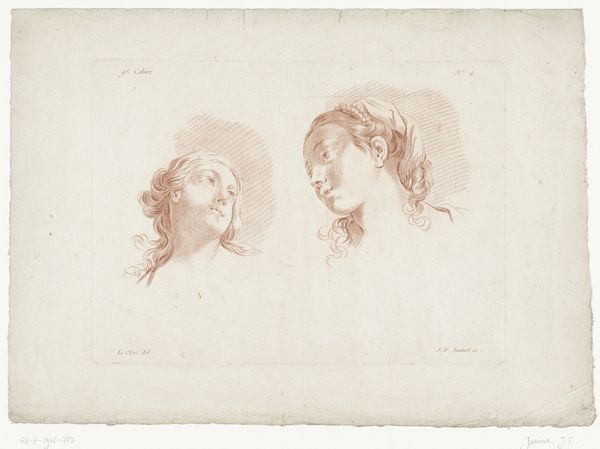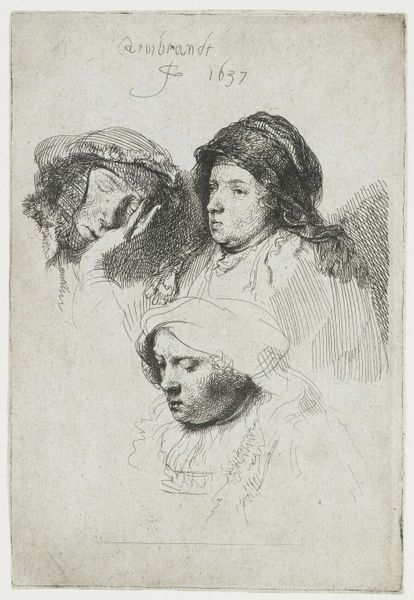
drawing, print, etching
#
portrait
#
drawing
# print
#
etching
#
men
#
portrait drawing
#
genre-painting
Dimensions: Plate: 3 5/16 × 5 3/8 in. (8.4 × 13.7 cm) Sheet: 6 3/4 × 8 15/16 in. (17.1 × 22.7 cm)
Copyright: Public Domain
Curator: So, we’re looking at “Four Turks and a Black Man” by Stefano della Bella, dating roughly from 1657 to 1667. It’s a delicate etching. My immediate feeling is one of quiet observation—like glimpsing a scene you’re not meant to see. Editor: I get that feeling too. There is something about the precision of the line that creates that impression. And then those towering turbans! Talk about making a statement. But a statement of what? Curator: It's an interesting question. Stefano della Bella, while known for his military scenes and landscapes, also did quite a few genre scenes, like this one, depicting exotic figures. Back then, "Turks" were often used in European art as stand-ins for the vaguely "Eastern," which fascinated and frightened people in equal measure. The Black man in the title... It's very much a piece of its time. Editor: The turbans are clearly signifiers, though! I keep thinking of the ways headwear signals status or power. Look at the size and shape— almost cartoonish in their grandiosity, aren't they? It speaks to a visual vocabulary intended to denote otherness, or perhaps a veiled warning about the "exotic east". It's a classic case of how clothing turns into potent symbolism. Curator: Right. And the "black man"—notice he isn't granted even the same visual exoticism of headwear. It subtly implies a further level of otherness, almost invisibility despite his literal presence. It's uncomfortable to modern eyes. But there is a kind of... elegance in Della Bella's style that is undeniable. The fineness of the lines creates depth, makes those faces surprisingly expressive. It dances on the edge of caricature but doesn't quite fall in. Editor: Exactly! The etching gives such an intriguing level of detail with minimal rendering. The more I look, the more I get a sense of them not as individuals but almost...types. Like actors on a stage. What a tricky and thought-provoking piece of visual rhetoric. Curator: For me, seeing the world filtered through another's experience can be really affecting. Like seeing your own history textbooks marked up by someone with a whole other view. Editor: Yeah, this makes me think how images solidify into these cultural echoes—constantly reshaped by viewers like you and me.
Comments
No comments
Be the first to comment and join the conversation on the ultimate creative platform.
